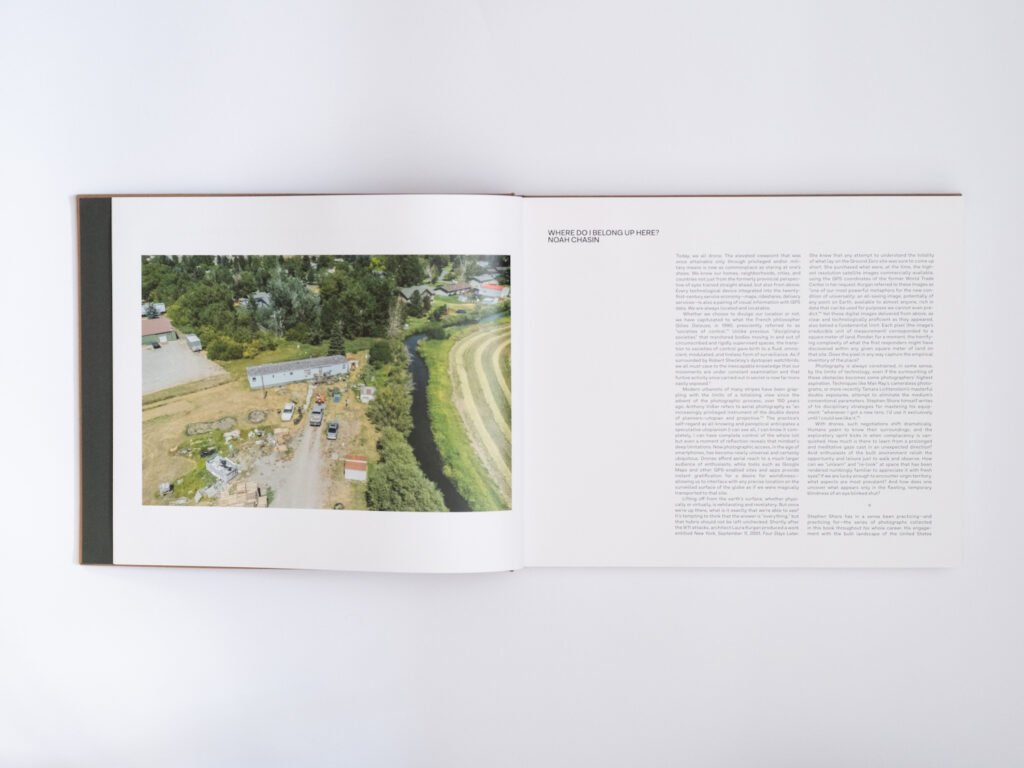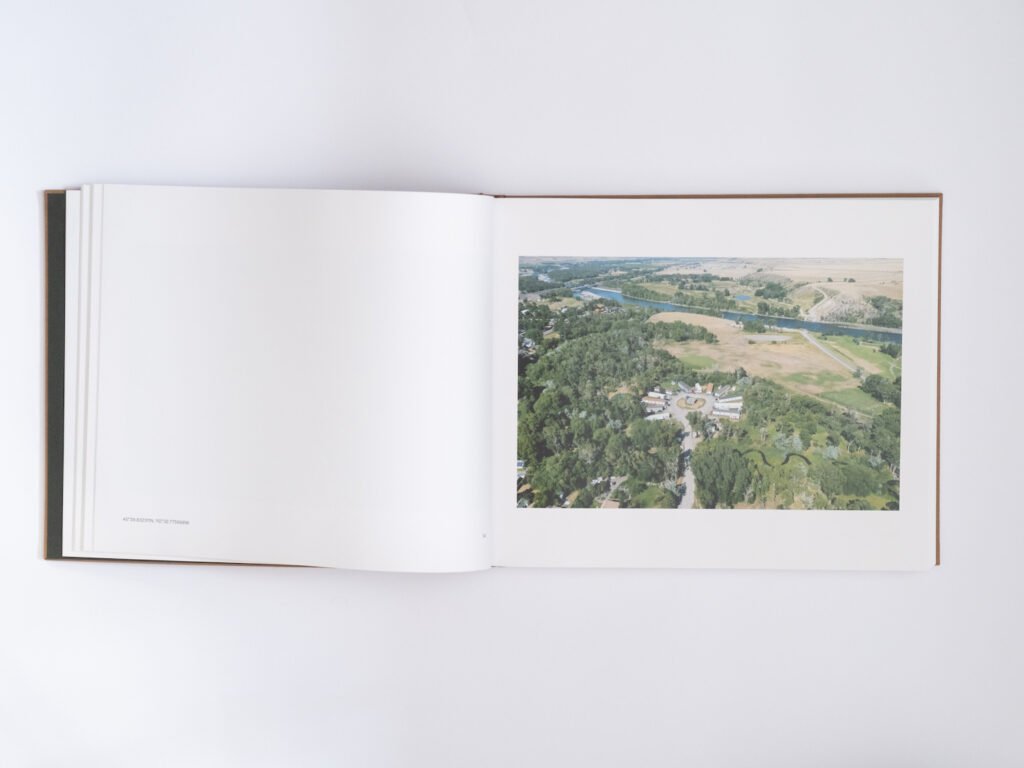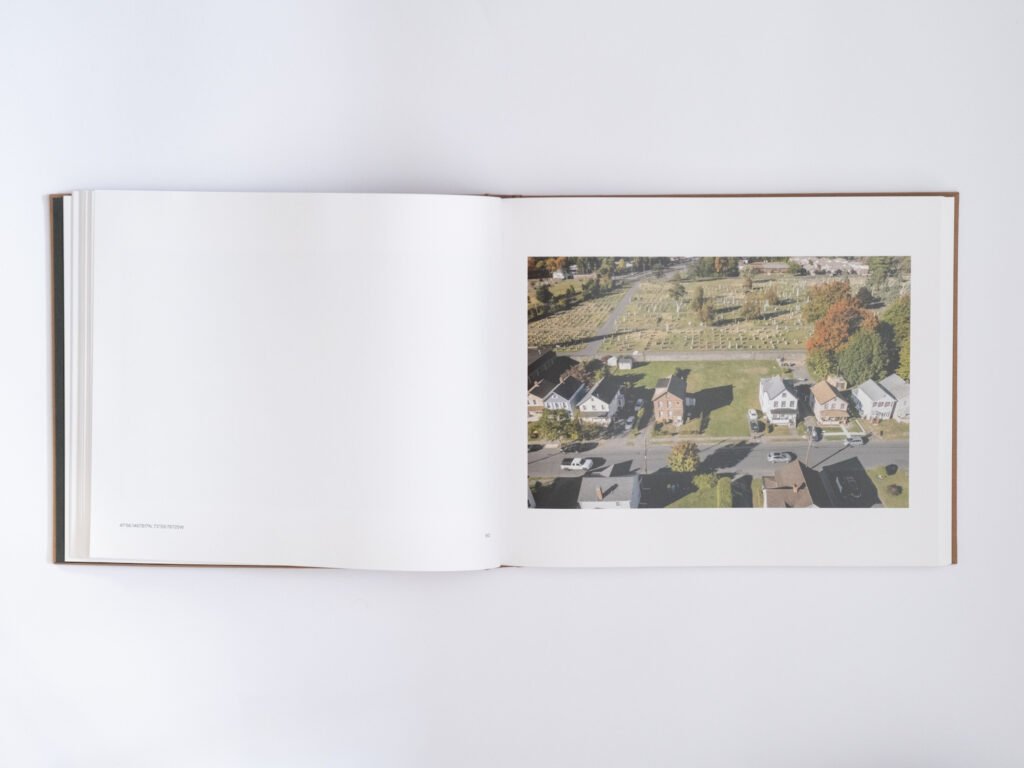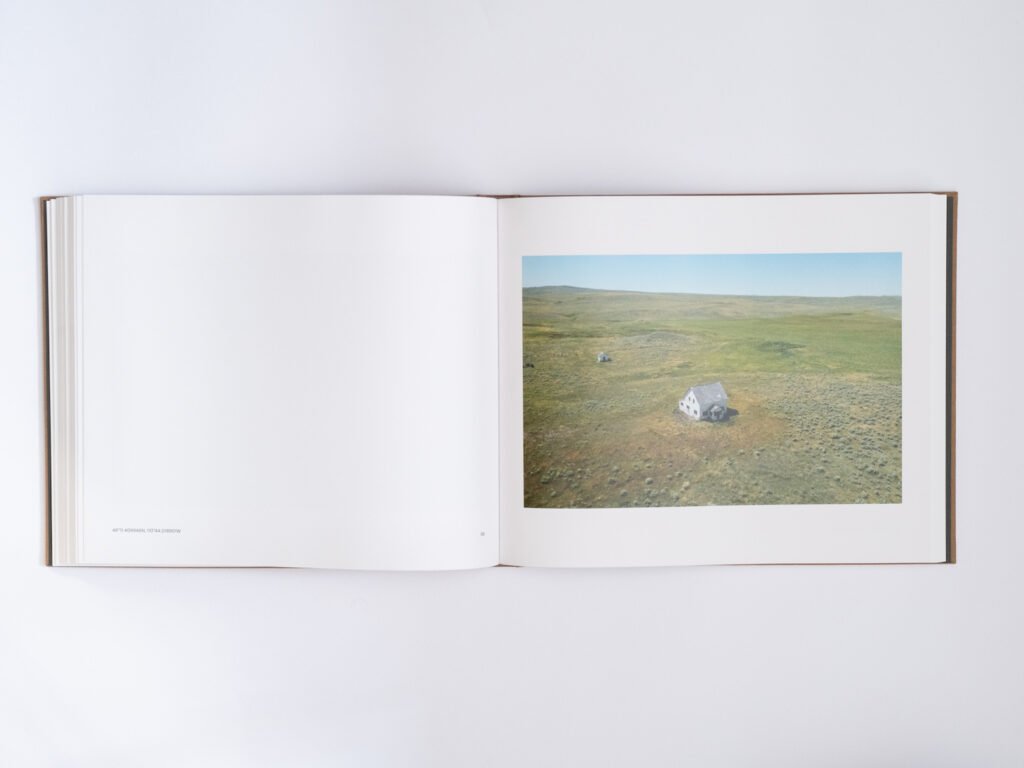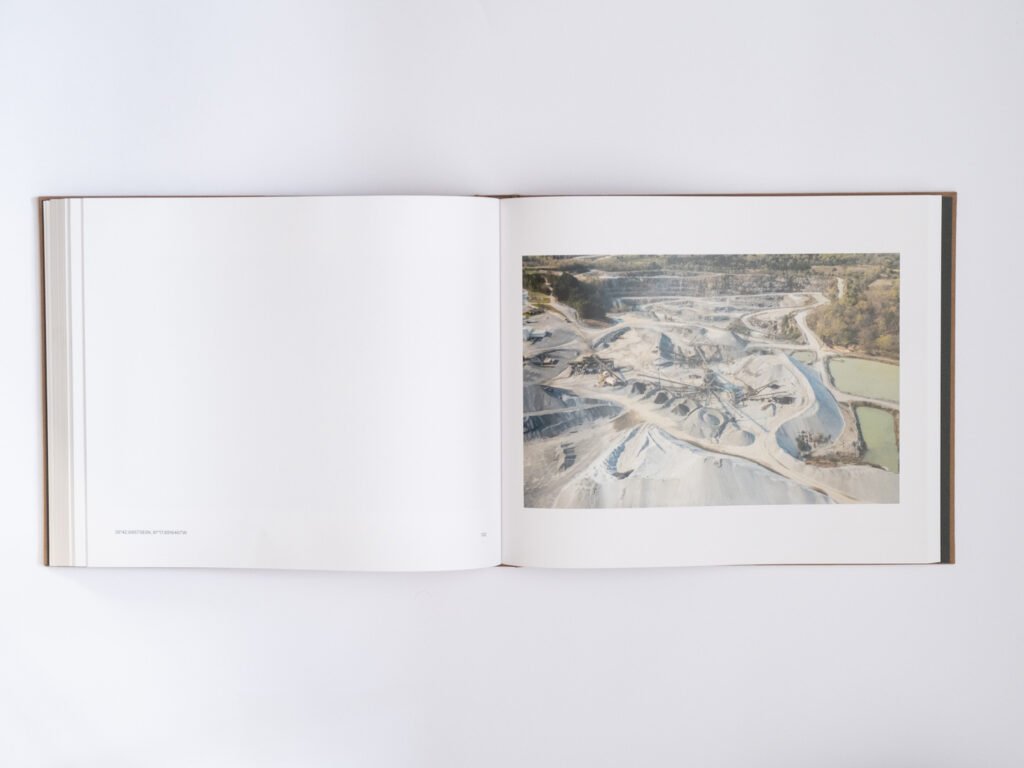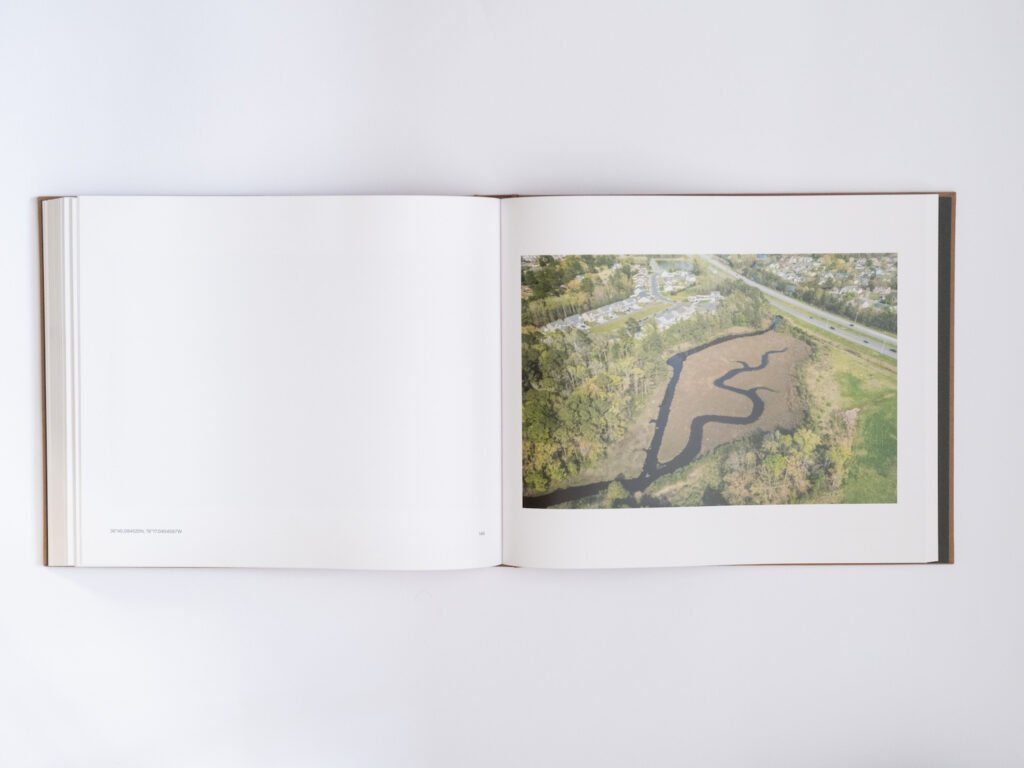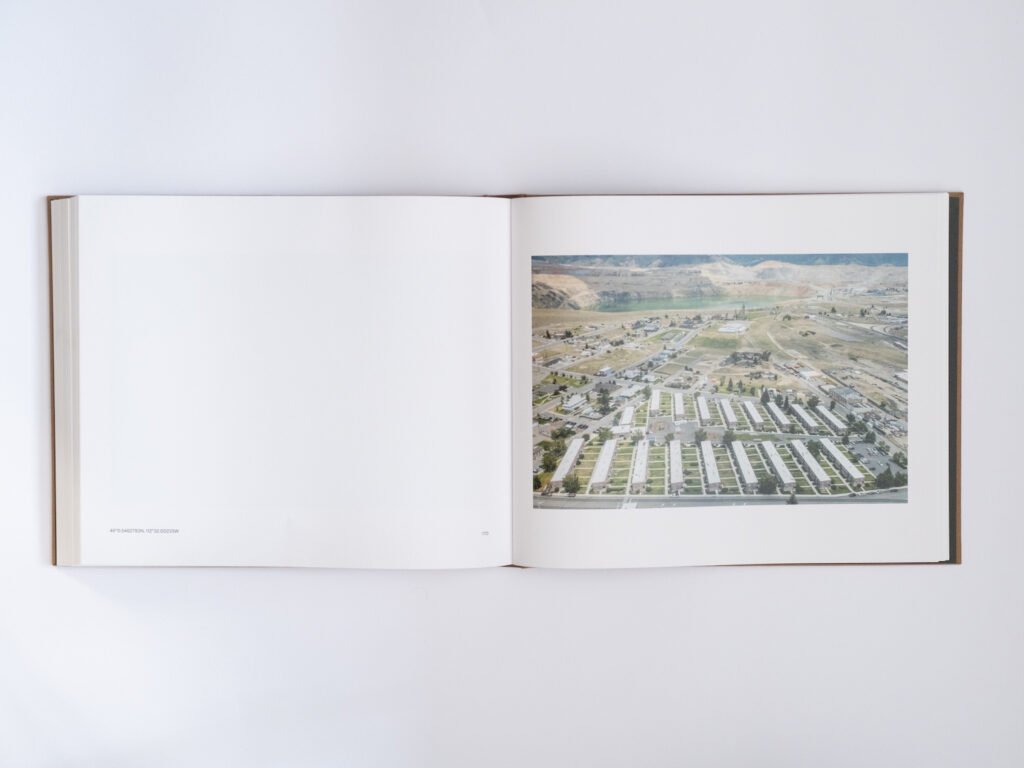STEPHEN SHORE
Topographies: Aerial Surveys of the American Landscape
published by: MACK
text by: Matteo Cremonesi
In the iconic works of Stephen Shore, America emerges in a new light, the reading that the author concretises through the images challenges the conventions of the collective imagination that permeates the perception of this nation in order to produce something else, another different perception of that same landscape so much recounted by American photography. As shrewdly observed by Peter Schjeldahl of The New Yorker, the Shore image has the power to subvert our perceptions of America and redefine what the American landscape can mean.
Topographies: Aerial Surveys of the American Landscape is a work that beneath its apparent simplicity and formal neatness hides an extraordinary complexity, a work that introduces the latest chapter in Shore’s incredible repertoire: a collection of photographs taken from 2020 using drones.
These images, different, aerial, reveal of the known and usual landscape another landscape, another perspective on it, a new look through which to realise the possibility of other, new attentions, new themes to investigate in the subject. From Topographies: Aerial Surveys of the American Landscape emerges the attention to surprising new details that delineate the intricate interplay between natural landscapes and the human carving in places ranging from the imposing Montana, to the vibrant lands of North Carolina, to the beating hearts of New York and beyond.
What is accomplished in Topographies: Aerial Surveys of the American Landscape by Stephen Shore is a reorganisation of the gaze and narrative of the American landscape, a reconfiguration and re-imagining of what photography and the history of the American has long told us and yet, through Shore’s action of reversal or superelevation, becomes or re-becomes something new and interesting, a territory once again to be discovered and conquered.
In this fresh series of works, Shore rediscovers the fundamental aspirations that animated the epochal 1975 exhibition entitled ‘New Topographics’. Using an unprecedented aerial point of view, he revisits the central themes of the movement: the purely descriptive lens, the investigation of clichés and the exploration of the delicate balance between what is natural and what is shaped by human ingenuity in the American landscape. Such introspection is at the same time an opportunity to reflect on how such themes can be continually reinterpreted and applied in the context of the 21st century.
In addition to exploring the formal possibilities offered by aerial photography, “Topographies” is distinguished by its devoted attention to detail and the ongoing search for wonder. Here, even the most modest bend of a river or the whimsical shadow of a building reveal the intricate textures and vivid colours that make up the urban and suburban mosaic of the United States of America. A silent but unmissable spectacle, in which everything is scrutinised with the precision and dedication that has always distinguished Shore’s work.
Stephen Shore’s work has been widely published and exhibited for the past forty-five years. He was the first living photographer to have a one-man show at the Metropolitan Museum of Art in New York since Alfred Stieglitz, forty years earlier. He has also had one-man shows at George Eastman House, Rochester; Kunsthalle, Dusseldorf; Hammer Museum, Los Angeles; Jeu de Paume, Paris; and Art Institute of Chicago. In 2017, the Museum of Modern Art opened a major retrospective spanning Stephen Shore’s entire career. He has received fellowships from the Guggenheim Foundation and the National Endowment for the Arts. His series of exhibitions at Light Gallery in New York in the early 1970s sparked new interest in color photography and in the use of the view camera for documentary work.


